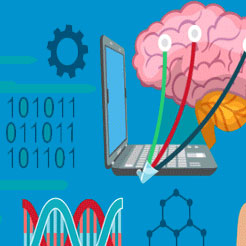The University of Washington’s College of Engineering educates outstanding engineers and develops ideas with potential to change the world. Engineers create jobs which drive the economy and are vital to solving society’s largest problems.
An economic powerhouse in the state, the UW directly and indirectly affects every resident of Washington. The College of Engineering accounts for 60% of UW's start-up companies that generate revenue and jobs, and spur economic activity.
- For more than three decades, the UW has secured more federal research funding than any other public university in the country.
- Over 270 companies have been started by UW faculty and students, or with UW technology.
- Engineering faculty lead in the number of patent applications filed, patents received, and innovations reported.
Our students, faculty, and staff are at the center of our mission. We strive to ensure that every UW engineer is prepared for a dynamic career and for leadership. This five-year Strategic Plan represents our commitment to every student. Engineering is a rigorous and creative discipline and our students meet high standards of performance. Each student has unique hopes, dreams, and strengths. It is our responsibility to help every student succeed by ensuring we deliver on our promise to provide a superior educational experience.
For over 100 years we’ve graduated creative engineers and developed innovative solutions through our research. Going forward, we expect even more of ourselves as we redesign engineering education and tightly focus our research on solving tomorrow’s challenges. We are called to rethink the way we educate students — focused on fundamentals while incorporating technological advances. We have hard work ahead of us and we ask for your commitment to support all of our students, faculty, and staff as they pursue their dreams and goals — for themselves and the world at large.
PLANNING FOR A RAPIDLY CHANGING WORLD
The landscape of engineering education is changing more swiftly than ever before. As fundamental shifts occur in technology and society we must consider the role engineers will play and how we will prepare our students to lead and succeed. The next century will challenge us to meet the need for clean and sustainable energy sources, improved urban infrastructure, advanced manufacturing, affordable health care delivery, cyber security and more. These needs have been recognized in the United States by the National Academy of Engineering’s "Grand Challenges of the 21st Century."
Our role is to ensure the next generation of engineers is primed to address these challenges. We must provide access to a world-class engineering education, retain top faculty to educate and engage students in breakthrough research, and offer contemporary facilities in which their work will flourish.
A world-class engineering program is a hallmark of a top university. We are fortunate to be located in a hub of creativity and innovation in aerospace, biotechnology, global health, clean technology, infrastructure, and information and communications technology, all of which demand and have helped build a cutting-edge engineering program.
Great engineering colleges anticipate, drive, and embrace change. We must be both strategic and agile to fully realize our potential to improve the quality of life in our community, and the world.
We are ready to move forward. To succeed, we must make significant investments to increase the number of students we can educate. Our plan and shared vision guide our choices, allow us to pursue emerging opportunities, and ensure the University of Washington's College of Engineering ranks among the pre-eminent public research colleges in the decades to come.
OUR GOALS
Goal: Provide an educational experience that prepares our students to be leaders
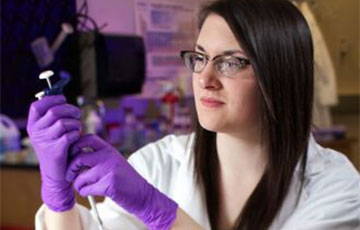 In the innovation age, successful leaders are not just measured by the climb to the corner office. Leadership requires many attributes including technical excellence, problem solving ability, innovation, collaboration, communication skills, and thoughtful management. Our role is to prepare students for both current challenges and for challenges yet unimagined.
In the innovation age, successful leaders are not just measured by the climb to the corner office. Leadership requires many attributes including technical excellence, problem solving ability, innovation, collaboration, communication skills, and thoughtful management. Our role is to prepare students for both current challenges and for challenges yet unimagined.
Because the UW is a top-tier research enterprise, our students have unique educational opportunities. UW engineering coursework and lab experiences incorporate cutting-edge research not yet in published textbooks or put into practice. Our undergraduate students participate in research, choose from a broad range of majors, and work collaboratively with professors and graduate students to address global problems. Senior design projects are a key example of our commitment to project-based, real-world learning, one of the best preparations for entering the engineering workforce.
Leadership inspiration comes from access to top professors. The best faculty members attract the most promising students and creatively engage those students in the learning and research processes. Our students work with elite researchers, great educators and entrepreneurial innovators whose work leads to real impact.
In the next five years we will re-imagine and restructure the UW engineering student experience and develop a leadership program track for engineering students. A team will explore integrative co-curricular activities and learning experiences, an engineering career center, communications and management programs, enhanced facilities to increase opportunities for hands-on learning, and undergraduate research opportunities that enrich the student experience.
The Center for Engineering Learning and Teaching (CELT)
We continue to investigate how engineers learn best and to incorporate that knowledge into how we teach and design the student experience. Our on-campus Center for Engineering Learning and Teaching is the first engineering-specific teaching and learning center in the nation to explicitly integrate research and teaching improvement in its mission. Transforming teaching is challenging and resource-intensive, but critically necessary as we educate for an increasingly complex technological world.
Goal: Increase diversity, inclusion, and access to foster excellence
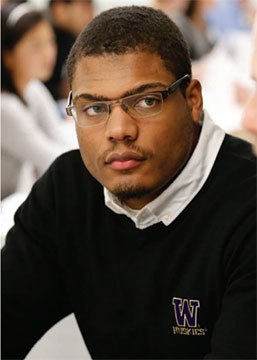 Engineering is centered on problem solving, and research shows that diverse teams lead to more innovative and better solutions. A diverse faculty and student body enable all students to interact with peers who have varied perspectives rooted in different backgrounds. These experiences are highly valued by employers and give students the skills they need to succeed in an interconnected world.
Engineering is centered on problem solving, and research shows that diverse teams lead to more innovative and better solutions. A diverse faculty and student body enable all students to interact with peers who have varied perspectives rooted in different backgrounds. These experiences are highly valued by employers and give students the skills they need to succeed in an interconnected world.
The college is a national leader in supporting women in engineering. Twenty-two percent of our faculty are female compared with the national average of 14 percent. Our female faculty are role models for the next generation of female engineers. In 2001, the UW was one of the first schools in the nation to receive a National Science Foundation ADVANCE grant. ADVANCE is a campus and national resource for best practices in academic leadership development, professional development and cultural change. Since the center’s inception the number of tenured or tenure-track female faculty has increased by an outstanding 57 percent.
We recognize the many aspects of diversity in education. Over the next five years we are dedicated to further developing and growing our diversity programs; recruiting and retaining a diverse faculty and student population; growing diversity-focused student scholarships and fellowships; and expanding our student academic services.
STARS—Engineering’s Academic “RedShirt” Program
Redshirting isn’t just for athletes anymore. In an attempt to level the playing field for low-income students interested in engineering, the college collaborated with Washington State University in 2013 to develop an “academic redshirt” program. The program brings dozens of low-income Washington state high school graduates to the two universities to study engineering in a five-year bachelor’s program. The program, known as STARS, provides incoming freshmen with extra academic support, mentoring, and funding over the course of their first year to help them become successful engineering students.
Goal: Build interdisciplinary collaborations that inspire innovation
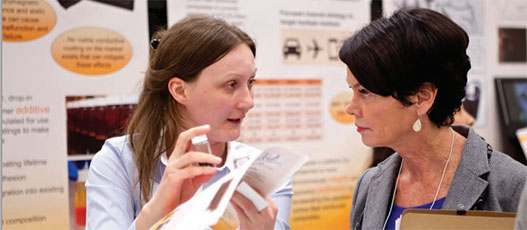 Interdisciplinary collaboration is one of the most promising paths to innovation. It encourages integrative learning, critical thinking, and creative problem solving. Our faculty and students work across campus in an environment based on respect, encouragement, and excellence and we have a long track record of successes.
Interdisciplinary collaboration is one of the most promising paths to innovation. It encourages integrative learning, critical thinking, and creative problem solving. Our faculty and students work across campus in an environment based on respect, encouragement, and excellence and we have a long track record of successes.
Computer science and computer engineering lie at the heart of the modern university and UW CSE places a premium on collaboration and interdisciplinary efforts. Recent examples include leadership of the NSF Engineering Research Center for Sensorimotor Neural Engineering, and the eScience Institute which is bringing new advances in data-intensive discovery to researchers campus-wide.
In the late 1960s we were one of the first universities to bring the engineer and scientist together to address medical problems. . Bioengineering was established in 1967 by Dr. Robert Rushmer, known for the first treadmills for cardiac testing, the hemodialysis shunt, and Doppler ultrasound instruments. It has since become a top-10 ranked department. We continue to push the boundaries with the new Molecular Engineering & Sciences Institute, which brings together research centers in the sciences, engineering, and medical disciplines to advance this rapidly-evolving interdisciplinary frontier.
Students Learn the Benefits of Interdisciplinary Collaboration at the Environmental Innovation Challenge
The UW Environmental Innovation Challenge encourages students who are passionate about clean technology to develop and present a product, process or service that reduces waste, minimizes energy consumption, and contributes to a healthier planet. The competition is the ultimate interdisciplinary experiment where problem-solving engineering students engage with business students to help get a product to the market. Teams are judged on the problem they address, a one-minute business pitch, prototype, and ability to articulate the potential impact of their product. In five out of the six years that the event has been held, teams with engineering students won the challenge.
Collaboration is not just within the UW; our faculty regularly partner with researchers across the country. Research partnerships with universities have resulted in significant investments by national foundations, including the Alfred P. Sloan Foundation, the Gordon and Betty Moore Foundation and the Leona M. and Harry B. Helmsley Charitable Trust.
In the next five years we will continue to encourage interdisciplinary collaboration across the college through several key initiatives. These will result in an increase in the number of joint faculty appointments within the university; new space for collaboration for both research projects and student maker labs; seed funding to encourage interdisciplinary work; and focused integration of undergraduate and graduate students in interdisciplinary research and innovation.
Goal: Create Industry and Community Partnerships to Increase Our Impact
The Puget Sound region is a thriving environment for corporations and entrepreneurs. Within a 50-mile radius of the UW campus Boeing, Kenworth, Amazon, Microsoft, The Gates Foundation, Philips, PATH, Google, Costco, and many more companies are leveraging the resources available in the College of Engineering. This strength of location fosters our corporate research partnerships, student internship and job opportunities, and tech transfer activities. And with more than 75 percent of College of Engineering alumni working in the region, our students have access to a terrific Husky network.
 We meet industry needs by providing trained and skilled graduates for the workforce and by translating the engineering expertise of our 250 faculty members into research impact. Our faculty and students also contribute to the local economy by spinning out companies and licensing inventions and technology. In 2013, engineering faculty reported 152 innovations, filed 187 patent applications, created nine of the 17 reported start-ups at UW, and received 46 patents.
We meet industry needs by providing trained and skilled graduates for the workforce and by translating the engineering expertise of our 250 faculty members into research impact. Our faculty and students also contribute to the local economy by spinning out companies and licensing inventions and technology. In 2013, engineering faculty reported 152 innovations, filed 187 patent applications, created nine of the 17 reported start-ups at UW, and received 46 patents.
We offer robust professional master’s programs in a variety of disciplines as well as customized certification programs to expand the knowledge of the current workforce. Our students participate in undergraduate research focused on real-world problems provided by industry. These experiences give students a head start in developing the professional skillset required by today’s employers.
To enhance these important partnerships, over the next five years we will respond to the growing industry need for skilled engineers by increasing our enrollment at all levels – undergraduate, graduate, professional masters and certification programs. Further, we aim to generate 60 percent of the annual commercialization activity on campus, increase the level of industry-sponsored research by 25 percent, establish a career center to better serve our community and our students, increase our on-campus industry collaborations similar to the Northwest Institute for Advanced Computing with the Pacific Northwest National Laboratory and the Intel Science & Technology Center, and increase undergraduate research and internship participation.
Intel's Science & Technology Center for Pervasive Computing
Since its inception, Intel has been a world-wide innovation leader and we are proud of our long-standing partnership with the company. Our faculty and students have benefited greatly from Intel support and an on-campus Intel center has expanded the boundaries of collaboration.
In 2011, Intel Labs launched "Intel Science and Technology Centers (ISTC)" to foster teamwork with academic pioneers to discover and expand the ways computing will enrich the human experience for generations to come. The Intel-funded but jointly-led Pervasive Computing Center on the UW campus brings together researchers from top-tier research universities, including leaders in pervasive computing, wireless communication and sensing, artificial intelligence and machine learning, computer vision, HCI, and security.
The ISTC's open research model encourages widespread sharing of information and results. This open approach was designed to foster community and speed the development of breakthrough innovations.
The freedom to share intellectual property overcomes one of the key barriers to the success of many industry-academic research collaborations.
Goal: Focus on Key Global Challenges Where We Can Achieve Greatest Impact and Excellence
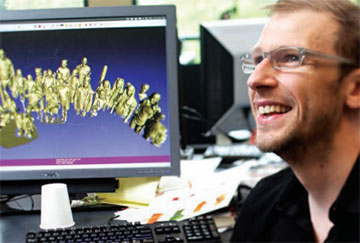 Engineering’s impact is greatest when lab breakthroughs enter the marketplace. The life-changing inventions of the 20th century – electrification, the automobile, air travel, computers, and refrigeration – are a result of engineering ingenuity. The next century challenges us to meet the need for new energy sources, access to clean water, resilient urban infrastructure, affordable health care delivery, cyber security, and more.
Engineering’s impact is greatest when lab breakthroughs enter the marketplace. The life-changing inventions of the 20th century – electrification, the automobile, air travel, computers, and refrigeration – are a result of engineering ingenuity. The next century challenges us to meet the need for new energy sources, access to clean water, resilient urban infrastructure, affordable health care delivery, cyber security, and more.
Grant aims to accelerate the growth of data-intensive discovery across many fields
Big data touches nearly every department and researcher on campus, and now the UW will be able to guide collaboration among labs and research teams through an award that emphasizes data-intensive discovery. The UW, the University of California, Berkeley, and New York University are partners in a five-year, $37.8 million grant from the Gordon and Betty Moore Foundation and the Alfred P. Sloan Foundation that will expand our team of data scientists on campus and fund postdoctoral fellows pursuing interdisciplinary data-science research, among other new additions. The initiative builds upon the extraordinary strength and creativity in our Department of Computer Science & Engineering and our eScience Institute.
We are fortunate to be located in a hub of creativity and innovation in aerospace, biotechnology, global health, clean technology, infrastructure, and information and communications technology, all of which demand a cutting-edge engineering program.
Our core mission is to develop outstanding engineers and ideas that change the world. We will focus on further developing our areas of excellence while at the same time continue to support innovative ideas where we can achieve the greatest impact. Over the next five years we will invest in areas of strength by recruiting top and upcoming faculty, building out space for collaboration for research projects and student maker labs, providing seed funding to encourage interdisciplinary work on the next big ideas, and integrating educational programs in these strength areas by increasing undergraduate research opportunities.
Goal: Make a Significant and Visible Societal Impact
Over the past 150 years, the University of Washington and the people of Washington state have worked together to create one of the most livable and vibrant regions in the nation. The university was founded in 1861 and in 1901 the College of Engineering began. As the area grew with the influx of companies that would forever change its landscape, the university rose to prominence on the national stage as a top-tier research enterprise. Since 1974, the UW has ranked in the top two public universities in receiving federal research funding.
We have a vibrant history of transformative invention and success, both through our graduates and research discovery. In the last year our award-winning faculty secured funding resulting in over $125 million in research expenditures. We led multi-university initiatives with world-renowned partners including MIT, Stanford, UC Berkeley and more. Twenty-five National Academy of Engineering members are associated with UW Engineering, and 13 of these remain active in the college. Our students place nationally in prestigious competitions sponsored by government and industry leaders. Our distinguished alumni play prominent roles in the government, fortune 500 companies, and in academia.
Over the next five years we are committed to expanding our impact by supporting the life-changing work of our faculty and students, encouraging national research partnerships, expanding industry collaboration, and exploring new ways of working together.
UW ENGINEERING HIGHLIGHTS
U.S. News and World Report ranks UW College of Engineering as #13 among public universities.
4,350 undergraduate students
1,829 graduate students
254 faculty members
17 NAE faculty members
Externally funded research in FY13: $125 MILLION
Reported 152 Innovations, filed 187 patent applications, and received 46 patents in FY13.
CoE is responsible for 41% OF UW INNOVATIONS reported in the last 5 years, yet comprises only 6% of UW faculty.
Strategic Research Initiatives Program
The Strategic Research Initiatives (SRI) program looks to place Washington in a clear leadership position, in promising new and growing areas of engineering research, through strategic investment in the form of seed funding. Selected teams receive around $50,000 in the first year with another potential $50,000 in the second year to advance their idea. The projects are also supported through matching funds from departments and other colleges.
OUR VISION
We will be known as a world leader in engineering education, in discovery, and in innovation that benefits the region, nation, and the world.
OUR MISSION
To develop outstanding engineers and ideas that change the world.
OUR VALUES
In education, research, and service, we value:
Excellence
Innovation
Collaboration
Risk‑taking
Leadership
Diversity
Creativity
Agility
